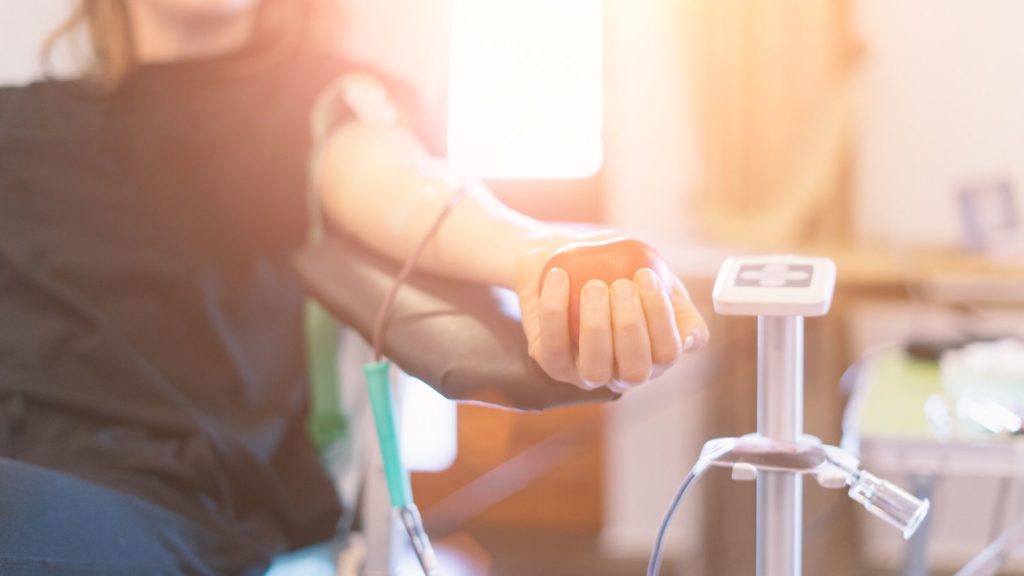What is blood transfusion?
Blood transfusion is the transfer of whole blood or a component–such as plasma, platelets, red blood cells, or clotting factors–from one person to another.
What conditions is it designed to treat?
Blood transfusions are used during medical procedures to increase blood volume, correct clotting problems, and improve immunity. Blood transfusions are also used in cancer treatment and as support for sickle cell anemia patients and premature infants. Victims of serious accidents, natural disasters, and military conflicts benefit from blood transfusions.Hemapheresis (purifying the blood) can reduce the number of red blood cells (cytapheresis) or reduce harmful substances from plasma (plasmapheresis). This method of treatment can help control diseases such as leukemia, which causes excess white blood cells, and thrombocytopenia, which causes excess platelets.
How is the procedure done?
Blood donors are carefully screened. A written questionnaire is given. Blood pressure, pulse, temperature, and iron levels are checked. A verbal questionnaire is given, requesting information about exposure to hepatitis, AIDS, malaria, and other blood-borne illnesses. There are also questions about other medical conditions and risky behaviors such as intravenous drug use.
The actual donation process takes about 15 minutes. About one pint is taken during each donation. The blood is then sealed in a plastic bag and stored in a refrigerator. A sample from each donation is sent to a lab to be tested for infectious diseases.
Donated blood is classified as either A, B, AB, or O. Blood is then further categorized as either Rh-positive or Rh- negative. It is important to identify blood types to avoid transfusion reactions when the blood is transfused.
Donor blood is cross-matched with recipient blood to ensure compatibility. Transfusions are given to recipients over the course of 2 hours or more for each unit of blood. Recipients are closely monitored for signs of a reaction for the first 15 or 20 minutes (the most likely time for a reaction to occur) and then checked every 30 to 40 minutes until the transfusion is completed.
What are the potential risks?
Potential risks include slight chance of contracting disease even if the blood has been properly screened, i.e., possibility of contracting hepatitis or HIV. However, because of the careful screening process, this is extremely uncommon. Immune response reaction (fever, chills, etc.) if transfused blood is incompatible with that of the recipient. Today, all blood is carefully screened, making transfusion reactions extremely rare.
What are special instructions after the procedure?
Symptoms of a transfusion reaction usually appear during or immediately after a blood transfusion. Delayed reactions can appear several days after a transfusion. If a transfusion recipient experiences a reaction, antihistamines, Tylenol, or steroids may be prescribed as symptoms dictate. Serious symptoms can result in kidney failure and shock. Do not ignore fever, chills, rash, lower back pain, fainting, dizziness, or bloody urine–seek medical attention immediately.
Thomas G. Stovall, M.D.
Dr. Stovall is a Clinical Professor of Obstetrics and Gynecology at the University of Tennessee Health Science Center in Memphis, Tennessee and Partner of Women’s Health Specialists, Inc.

